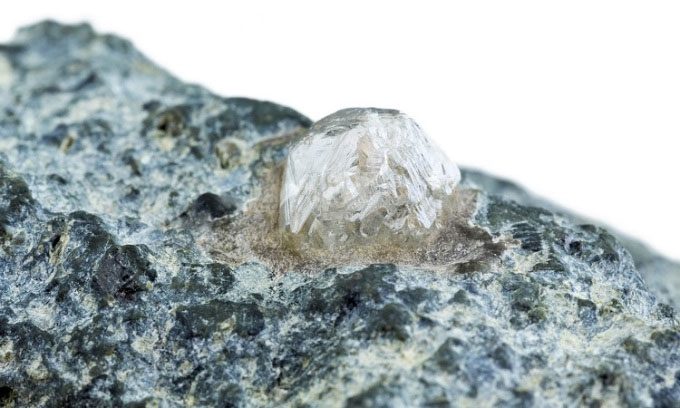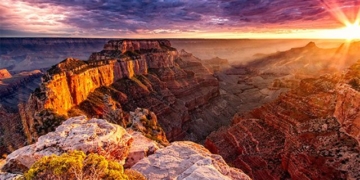Diamonds on the surface of the Earth today may originate from ancient kimberlite eruptions that occurred after tectonic plates separated.
These powerful volcanic eruptions propel diamonds into the sky and scatter this precious stone across the Earth’s surface, a phenomenon that has long puzzled researchers. Scientists have now discovered the mechanism occurring over 160 km beneath the Earth’s surface that pushes diamond crystals upwards with such force. New research reveals the mysterious process that causes rare kimberlite eruptions and indicates where the richest diamond ores are likely to be found.

Diamonds are typically found in kimberlite rock. (Photo: Interesting Engineering).
“Diamonds form at a location deep within the continental crust. The question is why they are propelled upwards from such depths after spending billions of years there,” said Professor Tom Gernon, a geologist at the University of Southampton.
To solve this mystery, in a study published at the end of July in the journal Nature, Gernon and colleagues analyzed historical data and continental plates, the massive slabs of the Earth’s crust that move slowly, along with kimberlite, the rock that contains diamonds ejected by eruptions. They found that over billions of years, most kimberlite eruptions occurred about 25 million years after the continental plates separated.
Upon closer examination, researchers found that the first kimberlite eruptions occurred after the continental plates fractured near their edges. Subsequent eruptions gradually migrated toward the center of the plate. The continental plates separate and come back together over a vast time scale. About 300 million years ago, North and South America were connected to Africa and Europe, all part of the supercontinent known as Pangea, but this landmass began to separate around 175 million years ago.
Based on computer models of rock and magma, scientists traced the sequence of events that triggered diamond eruptions. The process begins when continental tectonic plates are stretched as separation starts. This stretching thins the rock layer and disturbs the normal flow of material in the Earth’s mantle directly below. The disturbance in the mantle is strong enough to detach blocks of rock from the base of the tectonic plate. These blocks have been under immense pressure for hundreds of millions of years. Carbon sediments can undergo structural changes to form diamonds.
As the rock blocks sink into the mantle, they induce increasing flows of disturbed material that spread outward, sliding thick rock layers tens of kilometers off the tectonic plate above. This propagation effect gathers all the necessary materials to create diamond-containing kimberlite magma. When it becomes hot enough, it rises rapidly, bursting through the crust in the form of a green eruption.
The most recent kimberlite eruption occurred 11,000 years ago at Igwisi Hill in Tanzania, but most took place during the Cretaceous period, between 146 and 66 million years ago. Unlike typical volcanic eruptions, kimberlite eruptions leave vertical pipe-shaped holes in the ground, providing the basis for many diamond mines.


















































